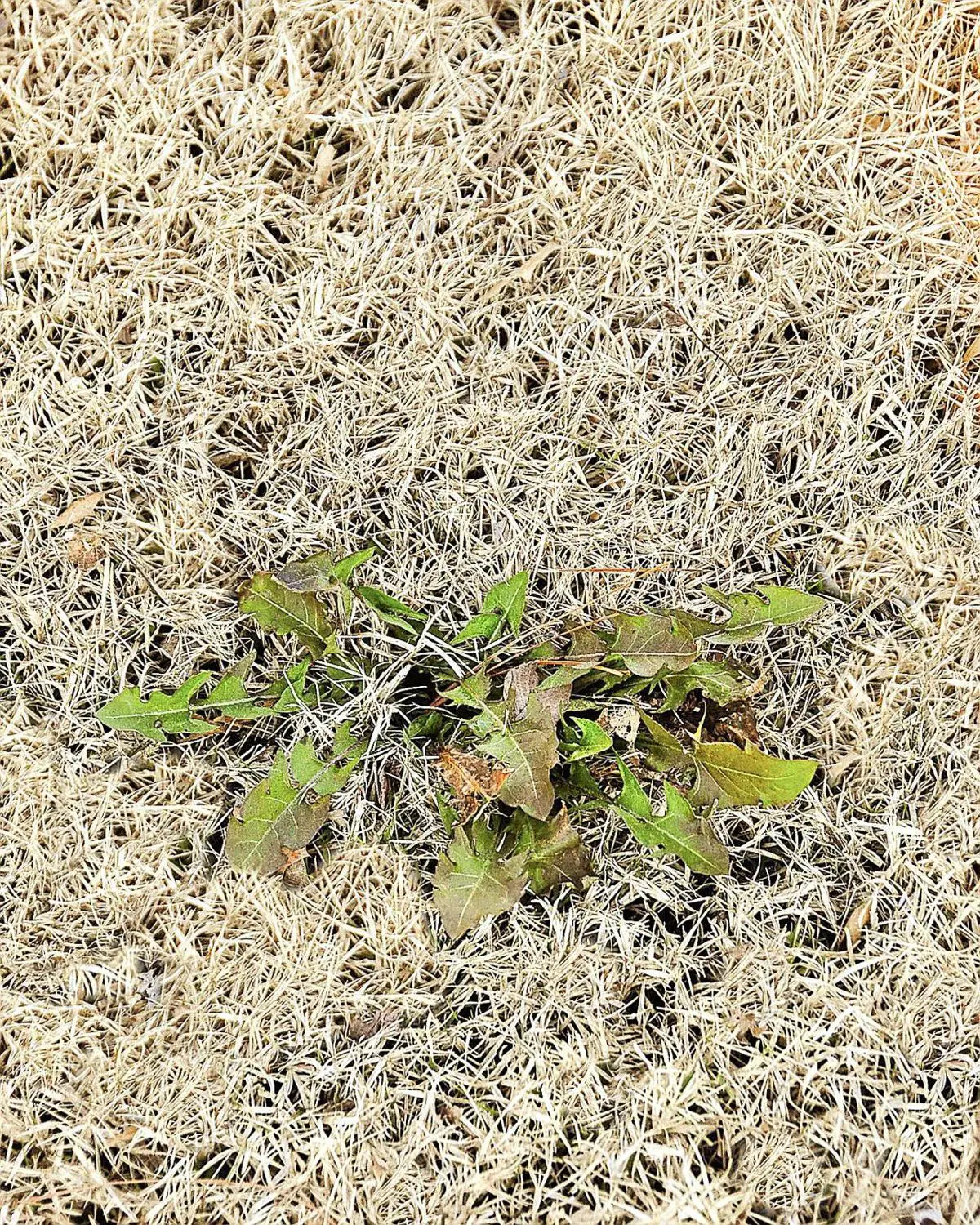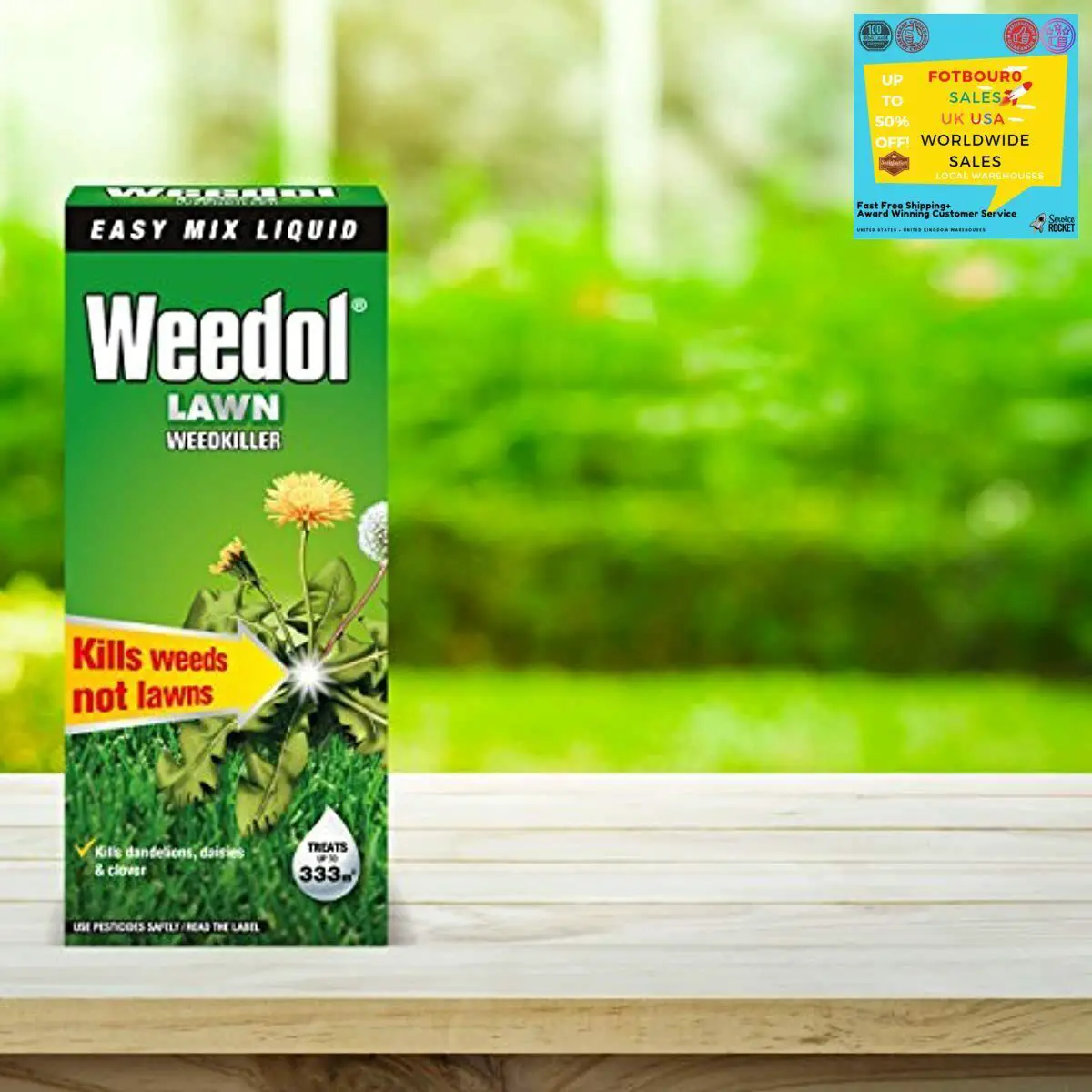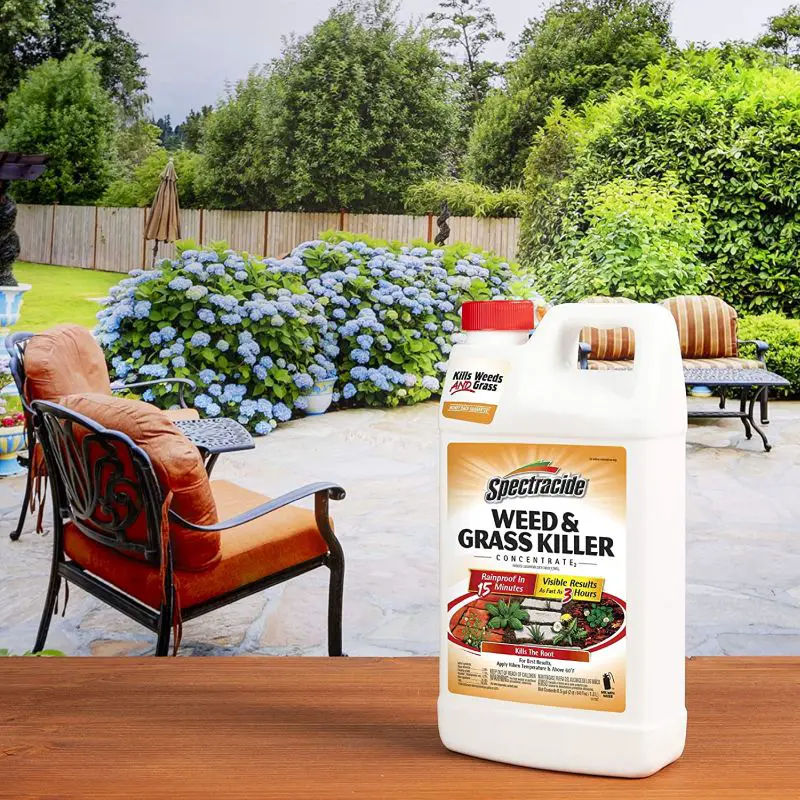Easy Steps To Restore A Lawn Full Of Weeds
Have you ever face the ruined lawn full of ugly weeds, without any possibility to enjoy beautiful, green grass? It is a horrible thing indeed.
I know that using chemicals is the most comfortable way to solve this issue, but it is definitely not the choice you should make. Instead, try to create a lovely new lush lawn full of healthy and vigorous grass. Lets see how.
Will Grass Grow After Killing Weeds
Even though the herbicide takes up to seven days to destroy weeds, you can safely sow ornamental flower seeds three days after spraying. Live roots could remain in the soil and grow new plants if you remove the dying weeds too soon. In the past few years, glyphosate has been linked to cancer, birth defects and infertility in laboratory animals, according to the Environmental Working Group, a Washington, D.C.-based environmental advocacy group.
Tips On Repairing A Lawn Full Of Ugly Weeds
Recommended Reading: How To Remove Dead Moss From Lawn
When Is It Too Late To Use Weed And Feed
It is generally considered too late at the end of fall. After this, if you are in a cold area, winter will start to take hold and the weed killer element will have nothing to work upon. It works when the weeds are actively growing, or before they sprout, depending upon whether you have a pre emergent or post emergent type.
Dethatch And Aerate Your Lawn

You might need to dethatch and aerate the soil for treated areas that still have healthy grass. Begin by using a rake or specialized dethatching rake to remove the thatch dead grass roots, grass clippings, mulch, leaves, etc. between your soil and your grass.
Once dethatch your lawn, use an aerator or hire a professional lawn care company to aerate the soil to reduce compaction. This process will allow new grass and established grass to get nutrients and water from the soil.
Recommended Reading: What Is The Best Time To Kill Weeds In Lawn
Use A Lawnmower To Get It To Its Regular Length
If you have many weeds in different areas, the best option is to use a lawnmower to speed up the process. Think that different grass types have different recommended mowing heights to let the healthy grass grow properly remember to note where the weeds were rooted beforehand, not lose track of them.
It is not recommended to use lawnmowers because they cant get rid of weed from the roots, but they are functional for helping you to speed up the cut process. So, try to work in conjunction with other cutters and with your hands.
How To Prevent Future Weeds From Taking Over Your Lawn Without Herbicides
The best long-term weed lawn management strategy is to ensure that you take care of your lawn so that weeds cant mount an offense. Prevention wins the day.
If your lawn is thick and healthy enough, there wont be enough room, sunlight, moisture, or nutrients available for the weeds to flourish and take over.
I promise that if you spend time manually pulling weeds and then focus on growing thick and healthy grass, that you wont give new weeds a chance to develop.
Thank you so much for reading this weed removal guide! I know there are legions of lawn care experts and gardening gurus out there. Can you please share your BEST weed removal tip? I love to hear from you and welcome all gardeners and green thumbs to comment below!
Recommended Reading: How Do I Fix My Patchy Lawn
Should I Pull Weeds Or Spray Them
Hand-weeding is better for removing a handful of weeds. Spraying weeds is better for handling large weed infestations. Pulling weeds by hand wont make future weeds harder to remove. Once the weeds have been removed, they need to be pulled out of the ground. If you have a large infestation of a particular weed, you may want to consider using a chemical herbicide to kill the weed.
This will kill all the weeds in the area, but it will also kill any beneficial insects that may be feeding on them. If you choose to use this method, be sure to read the label carefully to make sure it is safe for you and your family.
How To Get Rid Of A Lawn Full Of Weeds
Before you start, its a good idea to identify the weeds growing in your lawn. Once you know what youre dealing with, its easier to select the best approach for weed removal.
Both natural and chemical methods of weed control have pros and cons and are simple to do. And they can both be effective when done in the right way.
Don’t Miss: How Often Should I Reseed My Lawn
How Long Does Weed Killer Work
While certain weeds are easy to control and can be knocked back with just one treatment, other weeds are a bit more persistent and may require multiple treatments. While we wish we could say that once we treat weeds, theyll never return, thats simply not the case.
Some of the more aggressive weeds, particularly grassy weeds do continue to return and require ongoing treatment. Fortunately, when youre on a comprehensive lawn care program, the goal is to stay ahead of these weeds and to use pre-emergent as effectively as possible. Then, we only have to spot-treat the breakthrough that pops up with post-emergent, selective materials.
- Identifying weeds and understanding why theyâre growing where they are is key to controlling them.
- Try to tolerate a few weeds as long as your lawn is generally healthy.
- Some non-chemical cultural practices favor desirable grasses over weeds.
- If you do use chemicals, different lawn situations may need different types of herbicides.
- When using herbicides, follow the label directions exactly as printed on the product container.
A weed is described as âa plant out of place.â What may be a hated weed invader for some, might be a tolerable ground cover to someone else.
While sustainable lawns may have some weedy plants in them, having well-adapted grass varieties will help keep weeds to a minimum.
These steps are one example of a simple weed control plan:
What Kills Weeds Down To The Root
If you want it to work, you have to wait for the white vinegar to sit in the weeds from your garden for a few days. The root system of the weed wont be harmed by the use of vinegar. If you wait too long, the vinegary smell will start to permeate the air, and youll be able to smell it from a mile away.
You can buy vinegar from the grocery store, buy it in a can or bottle, make it yourself at home or buy a bottle of vinegar at the store. Ive also heard of people making their own vinegar by mixing vinegar with water and letting it sit on the top of a pot of boiling water for an hour or so. Its not the most efficient way of making vinegar, though, so I wouldnt recommend it unless you really have no other choice.
Don’t Miss: Are Battery Operated Lawn Mowers Good
When To Apply Lawn Weed Killer
You will only kill weeds when they are actively growing. This means commencing sometime in May and finishing sometime in late September or early October.
I would not rush to apply lawn weed killer to the whole lawn in the early spring as there will be a lot of weeds that wont surface until later on. In early spring just spot or hand weed. For a good weed kill over a broad range of weeds in your lawn try starting in May. If you need to repeat the treatment you still have plenty of time before cold weather makes it impractical. Read the label of your weed killer to make sure repeat treatments are allowed.
A well fertilised lawn will help you get the most from your weed killer. In spring apply fertiliser in April and weed kill end of May or early June. In autumn feed 7-10 days before weed spraying.
One of my favourite times for complete lawn weed control is in late August or September whilst there is still some warmth around. I would recommend this if you just need the one application in the year. The reason for this is:
- Most weed types are still around
- The spring seeds in your lawn will have germinated so you get those as well
- Killing weeds in autumn is easier than killing winter hardened weeds in spring
- Youll have a weed free lawn until the next round of weed seeds germinate the following spring
Yard And Garden: Timing And Applying Broadleaf Lawn Herbicides

AMES, Iowa The air has a bit of a chill in it in the mornings. Fall is almost here, which means its time to think about preparing lawns with weed control. Fall is an excellent time to apply broadleaf herbicides for perennial broadleaf control, but take care to do it properly and effectively.
Iowa State University Extension and Outreach horticulturists can help answer questions about the right time and methods to apply broadleaf herbicides.
You May Like: Best Herbicide For Wild Violets
You May Like: Is Aeration Good For Your Lawn
Most Common Weeds And How To Get Rid Of Them
Once you identify the types of weeds in your lawn, youll need to learn more about how to target them. Heres a quick guide to some of the most common lawn weeds, and how to clear them from your yard.
Name A perennial weed that grows low to the ground. Typically found in lawns. A broadleaf herbicide will kill white clover. Use plastic sheeting or newspaper to smother clover and kill it within a few weeks. Vinegar mixed with dish soap is also effective.
Hand Removal Of Weeds In Florida
Pulling weeds by hand may not be a major effort for homeowners with a modestly-sized yard, but for large properties and commercial landscapes, it would require constant attention and represent backbreaking effort. Hand-pulling is only practical when only a few weeds are visible, and pulling a few weed sprouts that appear following a rain does not usually require a major effort. But it should not become a full-time job.
Its important to remove the entire plant, however, including all roots, to prevent new growth, and to make certain that the plant wont grow back. A particularly pervasive weed like Florida pusley must often be dug out of the ground with a trowel.
Read Also: How Do You Overseed Your Lawn
Identifying Common Lawn Weeds
Before I give you some tips on how to get rid of a lawn full of weeds, lets start by taking a closer look at some of the most common weeds you will encounter.
Plantain
This is a broadleaf perennial with fibrous roots and short-winged stalk. The flowers are greenish-yellow in thin spikes. A non-chemical treatment can kill this weed.
Dandelion
Another common and probably the most recognizable garden weed is dandelion. This is a yellow flower with a deep taproot and a multi-petalled seed head. The roots can only be removed by a weeding tool.
Common ragweed
This broadleaf annual has fibrous roots and causes hay fever. Again, a weeding tool is whats needed to remove the roots.
Daisy
This white flower has spoon-shaped leaves and is often tinged with pink tips. The leaves can be killed with vinegar.
Grassy weeds and crabgrass
These types of weeds are quite deceiving as they look just like grass and grow in the same manner. Weeding tools are the best way to remove them.
These were just some of the many types of weeds that are typically found in lawns. So whats the best way to get rid of them? Keep reading to find out.
Can You Overseed A Lawn With Weeds
Existing weeds wont be killed by over seeding. New weed growth will be suppressed by a thick, overseeded lawn. If you dont kill the established weeds, they will take water and nutrients from your grass. If you want to keep your lawn healthy, its important to maintain a healthy soil. If you dont, youll end up with a lawn thats not as healthy as it could be.
You May Like: How To Get Rid Of Lots Of Weeds In Lawn
How Weeds In Lawns Work
To understand how to treat a lawn, its important to understand the weeds themselves. Weeds are plants, just like the grass in your lawn. Because they are plants, weeds flourish in the same conditions that a lush, green lawn would. Weeds also grow when the grass is cut low and the soil is compacted. These ideal conditions can lead to a lawn full of weeds, but there are a few different types of weeds to be aware of:
- Broadleaf weed. These weeds include dandelions, clover, ground ivy, oxalis, chickweed, thistle, dollarweed, and plantain. The leaves on these weeds are broad and flat.
- Grassy weed. These weeds include crabgrass, foxtail, annual bluegrass, and quackgrass. These weeds grow in blades and look like grass.
- Grass-like weed. These weeds include nut sedge, wild onion, and wild garlic. These weeds may look somewhat like grass, but they grow in a more tubular and hollow shape.
Its important to identify which type of weeds are growing in your yard before choosing a treatment. Some products are specifically designed for certain types of weeds and can only be used for that kind.
What You Might Need
What you will need is a selective herbicide that targets broadleaf weeds like dandelions. A non-selective herbicide like Round Up will target everything including healthy grass, shrubs and bushes.
So, youâll want to avoid that unless you want to start over. Wait several weeks after treating an area with both types of herbicides before you can plant new grass seed because the herbicide will prevent new seed from germinating.
Even selective herbicides such as 2,4 D can do damage to shrubs and bushes, so be careful where you spray it.
There are two types of weed control: One is granular, and the other is liquid. The granular type is what you would likely get at Home Depot, Loweâs and other stores if youâre going to do it yourself. Scottâs Turf Builder weed and feed is an example of granular.
The liquid type is what you would likely buy to spot treat weeds. Ortho Weed B-Gon is a liquid spray that doesnât contain fertilizer.
Lawn care companies may use either kind. If theyâre treating an entire lawn with liquid, it will probably contain a fertilizer to give your lawn a shot of nitrogen.
This time of year, grass is already green and growing like crazy. A fertilizer will help boost color and growth, and itâs also definitely good for helping a new lawn get established.
Avoid weed control on a new lawn until it is established.
As for the application, itâs always best to follow the instructions on the bag or bottle.
You May Like: Where Can You Buy Hydro Mousse Liquid Lawn
Herbicides For Weed Removal In Lawns
If your entire lawn is completely overtaken with weeds and nothing has seemed to work in terms of pulling up weeds, fertilizing, keeping the grass at 2-4 inches, and watering properly, the final resort is herbicides.
Beware of roundup, as it is not only toxic to other plants, but extremely toxic for humans and pets.
According to thisoldhouse.com, Some herbicides work only within a certain temperature range others work only when applied at a specific time of year.
So always make sure to always follow the instructions carefully, and confirm that the grass you are growing can grow well utilizing that particular herbicide.
Plant Seeds Or Lay Down Sod

Once your soil is prepped, you can use a garden spreader to lay down grass seed or lay sod instead. Traditional seeding is far more affordable but takes up to 12 weeks with some grass species to yield a full, beautiful lawn. Laying down sod provides an instant new lawn, but the cost can be about four times as much or more. Both seeding and sod require intensive maintenance afterward. Regardless of which method you use, complete this step in the correct growing season for your species.
| Pros | ||
|
|
|
| Sod |
|
|
Don’t Miss: How To Fill Bare Spots In Lawn